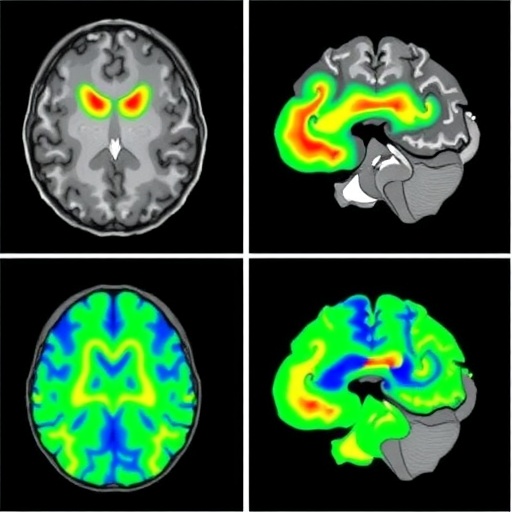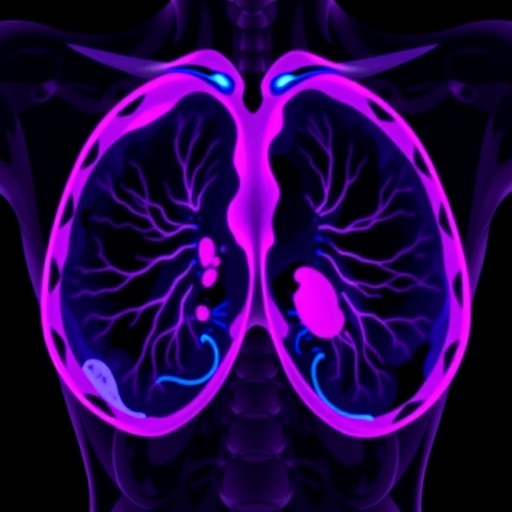In a groundbreaking advancement for the management of breast cancer patients afflicted with brain metastases, researchers have developed a novel prognostic tool that promises enhanced precision in survival predictions following stereotactic radiotherapy (SRT). This innovation comes in the form of a sophisticated nomogram, meticulously crafted through rigorous statistical analyses and comprehensive clinical data, positioning it as a superior alternative to existing prognostic models.
Breast cancer brain metastases (BCBM) present a formidable challenge in oncology, often complicating treatment decisions due to their complex nature and heterogeneous patient outcomes. Stereotactic radiotherapy has become a cornerstone in the localized management of brain metastases, targeting lesions with high precision. Yet, clinicians have long sought more reliable methods to forecast overall survival (OS) to personalize therapeutic strategies effectively. This nomogram emerges as a pivotal tool in addressing this unmet need.
The development process involved a retrospective cohort study encompassing 101 breast cancer patients harboring brain metastases treated with SRT, of whom 96 met the stringent inclusion criteria for analysis. Detailed clinical and pathological data were collated, encompassing variables ranging from molecular subtype classifications to functional status scores. By deploying univariate and multivariate Cox regression analyses, the research team identified key prognostic factors intricately linked to patient outcomes.
Among the variables pinpointed, the number of brain metastases posed a significant influence, echoing prior evidence that lesion burden correlates strongly with prognosis. Molecular subtypes of breast cancer further stratified risk profiles, underscoring biological heterogeneity’s role in disease trajectory. Intriguingly, whether brain metastasis represented the initial metastatic site bore relevance, highlighting patterns in metastatic dissemination that inform survival probabilities.
Functional capacity, quantified by the Karnofsky Performance Status (KPS), emerged as a critical determinant, reaffirming the interplay between patient resilience and therapeutic efficacy. Additionally, the receipt of systemic therapy post-SRT was recognized for its survival benefits, accentuating the importance of integrated multimodal approaches in managing metastatic breast cancer.
The culmination of these insights led to the final nomogram model selected through the Akaike information criterion (AIC), incorporating a balanced ensemble of prognostic variables: patient age, KPS, molecular subtype, number of brain metastases, brain metastasis as the initial metastatic site, planning target volume (PTV), hepatic metastatic involvement, serum albumin levels, and neutrophil count. This comprehensive model synthesizes multifaceted clinical parameters to generate individualized survival estimates.
Validation procedures showcased the nomogram’s robust performance. Calibration plots depicted close concordance between predicted survival outcomes and observed data, affirming the model’s internal validity. The concordance index (C-index), a measure of discriminatory power, reached an impressive 0.823 with a 95% confidence interval spanning 0.760 to 0.885, surpassing traditional prognostic indices.
Notably, when benchmarked against widely used systems such as Recursive Partitioning Analysis (RPA), Graded Prognostic Assessment (GPA), and breast-specific GPA, the nomogram exhibited markedly superior predictive accuracy. The RPA’s C-index stood at 0.627, GPA at 0.637, and breast-GPA at 0.699, emphasizing the new model’s enhanced capability to differentiate patient subgroups with varying survival probabilities effectively.
Survival distributions stratified through the nomogram further validated its clinical utility. Kaplan-Meier analyses revealed clear demarcations among four risk groups delineated by the nomogram’s risk scores, demonstrating practical applicability in patient counseling and individualized treatment planning. This stratification fosters nuanced decision-making tailored to the prognostic outlook of each patient.
Importantly, incorporating routine biomarkers such as albumin and neutrophil counts strengthens the nomogram’s relevance in everyday clinical practice, facilitating its adoption without necessitating complex or prohibitively expensive testing modalities. This alignment with accessible clinical data broadens its utility across diverse healthcare settings.
The implications of this research extend beyond prognostication alone. By providing a precise estimation of survival, the nomogram supports optimized treatment sequencing, identification of candidates for clinical trials, and informed discussions regarding goals of care. It thereby represents a pivotal advancement in personalized oncology for a vulnerable patient population.
Moreover, this study exemplifies the power of integrating statistical modeling with clinical insights to navigate the intricacies inherent in metastatic cancer management. The nomogram’s development underscores the value of interdisciplinary collaboration encompassing oncology, radiology, pathology, and biostatistics.
Looking ahead, prospective external validation studies are warranted to confirm the model’s generalizability across varied populations and practice environments. Additionally, adaptation of this framework could inspire analogous prognostic tool development for other metastatic sites and cancer types, amplifying the impact of personalized medicine strategies.
In summary, the introduction of this refined nomogram marks a leap forward in prognostic assessment for breast cancer patients contending with brain metastases after stereotactic radiotherapy. Its robust validation, superior predictive accuracy, and clinical practicality herald a new era in tailored oncologic care, offering hope for improved survival and quality of life through precision-guided therapeutic decisions.
Subject of Research: Prognostic modeling for survival prediction in breast cancer brain metastasis patients treated with stereotactic radiotherapy.
Article Title: A nomogram for breast cancer brain metastasis patients after stereotactic radiotherapy
Article References: Chen, Q., Xiong, J., Wang, H. et al. A nomogram for breast cancer brain metastasis patients after stereotactic radiotherapy. BMC Cancer 25, 1784 (2025). https://doi.org/10.1186/s12885-025-14937-9
Image Credits: Scienmag.com
DOI: 19 November 2025
Tags: brain metastases prognosisbreast cancer treatment advancementsclinical data analysis in breast cancerCox regression in survival analysisnomogram for survival predictiononcological prognostic toolspatient outcomes in brain metastasespersonalized cancer therapy strategiesprecision medicine in breast cancer treatmentretrospective cohort study in cancerstatistical analysis in oncologystereotactic radiotherapy effectiveness





